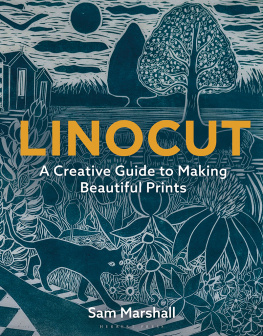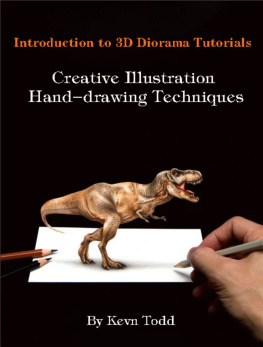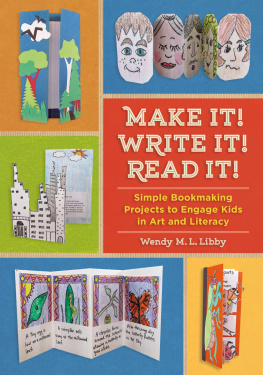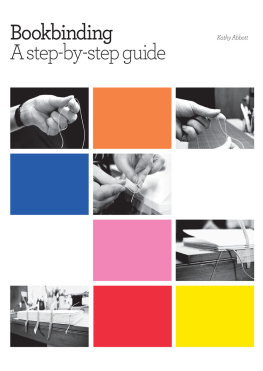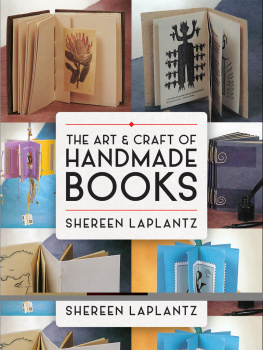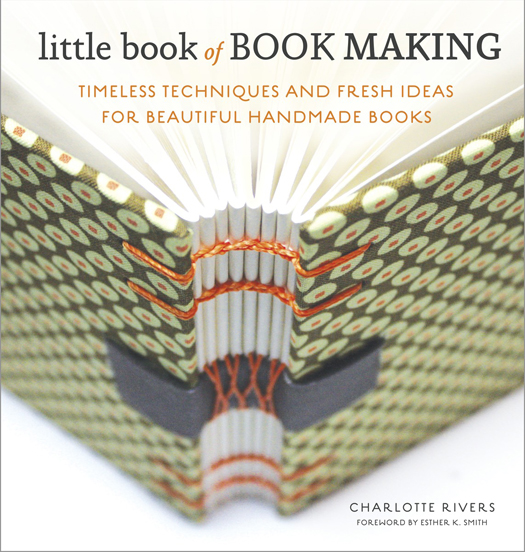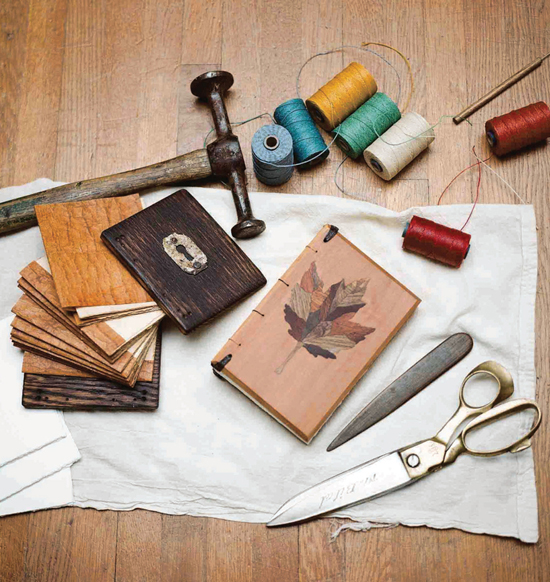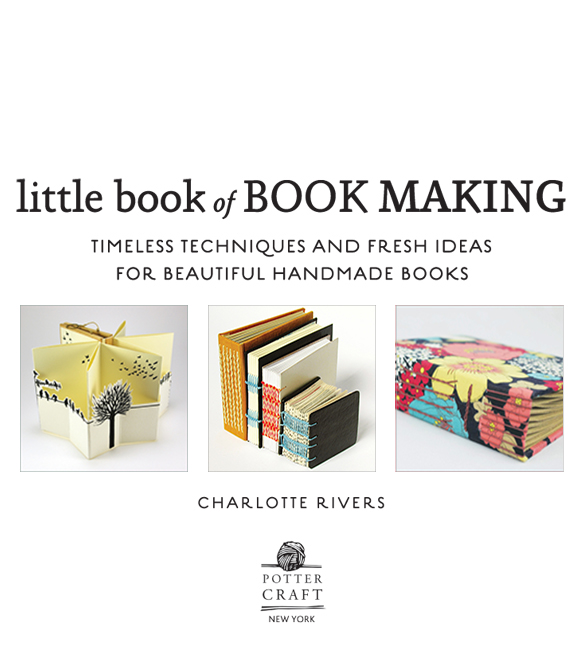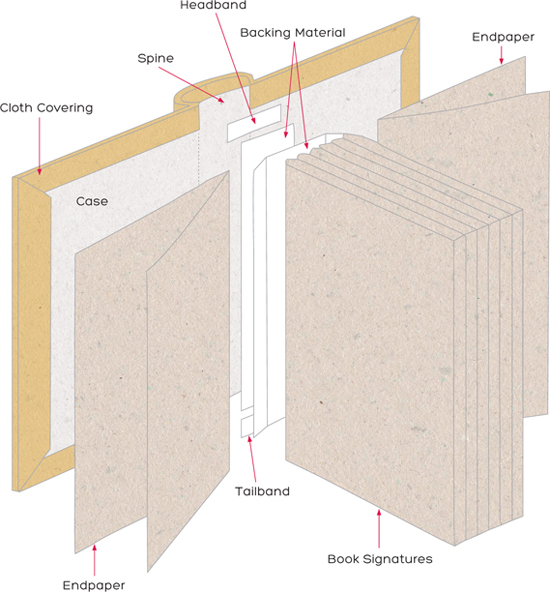Copyright 2014 by Rotovision SA
All rights reserved.
Published in the United States by Potter Craft, an imprint of the Crown Publishing Group, a division of Random House LLC, a Penguin Random House Company, New York.
www.crownpublishing.com
wwww.pottercraft.com
POTTER CRAFT and colophon is a registered trademark of Random House LLC.
Simultaneously published in Great Britain as l Handmade Books by Jacqui Small LLP, an imprint of Aurum Press, London.
Library of Congress Cataloging-in-Publication Data available upon request.
ISBN: 978-07704-3514-1
EBook ISBN: 978-0-7704-3515-8
Printed in China
Illustrations by Hannah Rhodes
v3.1
FOREWORD
I am honored that Charlotte asked me to write this foreword and included Purgatory Pie Presss limited editions in this little book.
Though I have been active in this community for decades, many of these contributors are new to me. Which makes me wonder: Could book craft be overtaking knitting and quilting? Its easier to start. You dont need equipmentjust scrap paper. But you can delve deep into book arts, exploring the intricacies of the craft such as papermaking, gilding, illumination, fine printing, edge painting, and precision leather work.
In different places people use different names for tools, techniques, and bindings. My origami snake book (invented by Anna Wolf) is WNYBACs dragon book. Some instructions differ from my methods, but work for some peoplewhich reminds me of the story of re-binding my first book.
When I moved to New York City, besides going dancing and learning which Chinatown restaurants stayed open past 2am, I hung out at the Center for Book Arts, where my future collaborator Dikko Faust was the letterpress printer. I loved stitching and working with my hands as a costume designer and figured I could re-bind a book. I got a tattered 1940s sewing manual from a thrift store and took it to CBA, knowing their bookbinders could help me.
Re-binding is a slow process. People came and went, and advised me as I worked. But each new person told me I was doing it wrong as I followed the last persons directions. It was frustrating, but I finished. My book was not perfectId had trouble trimming my endsheets and one had stretched and wrinkled when I pasted it. But I had accomplished my task. And learned Id rather design than repair books for a living! The most important thing I learned was that everyone told me something different and everyone was right. There are many ways to do it.
Find inspiration in the works within this book and try the projects at the end. See if you prefer folding or stitchingor if (unlike me!) you like to glue. If something does not work for you, invent your own way of doing it. Maybe I will see your books on Etsy next year, or even have the chance to include them in an exhibit that I curate!
Have fun, and (as I say when I inscribe How to Make Books) MAKE BOOKS NOT WAR!

Esther K. Smith ~ Purgatory Pie Press
ABOUT THIS BOOK
Bookbinding is an open, multidisciplinary craft, which can incorporate illustration, graphic design, photography, printing, needlework, papercraft, and many other creative disciplines. This is one reason why it is so appealing to creatives, who can bring their particular set of talents and passions into the process of crafting a handmade book.
A centuries-old craft, contemporary bookmakers are finding new ways to interpret traditional binding techniques to create beautiful artisan books. This book aims to showcase the diversity and craftsmanship involved and inspire you to make your own.
The first section of this book presents a showcase of the inspirational work of bookmakers around the world. We begin by looking at methods of folded bindings, showing how a single sheet of paper can be transformed into pages for a book, or combined to create flowing origami structures. Then we focus on sewn bindings and the array of different stitches employed to bind pages and covers together, both functional and decorative. Having looked at ways to physically assemble a book we then move on to look at creative treatments for pages and covers and experimental packaging. These inspirational profiles also feature a See Also helping you find more information about relevant techniques used.
The final section of this book provides practical step-by-step tutorials for recreating some of the techniques featured throughout, beginning with different folds, then stitches, then page and cover treatments.
Finally, a resources section at the back provides useful links to help you delve deeper into the world of book arts. By the time you turn the final page, hopefully you will be inspired and equipped to translate your own unique set of skills into a handmade book.
ANATOMY OF A BOOK
Shown here is the anatomy of a typical case-bound book. Many of the artist books that you will find within the pages of this book employ this binding, but there are also myriad different interpretations and experimentations of bookbinding techniques showcased within.
Youll find folded books, sewn books, books with exposed spines, books with shell covers, and books with wooden cases.
The descriptions of specific bookbinding terms can be found in the , but here are some key elements that make up the anatomy of a typical case-bound book.
Book Signatures
A signature is formed of a number of pages folded together. They are then sewn together to form a textblock, or the inside pages of a book. Signatures in most commercial printed books are octavos (16 pages per signature), where a single sheet is folded in half three times.


